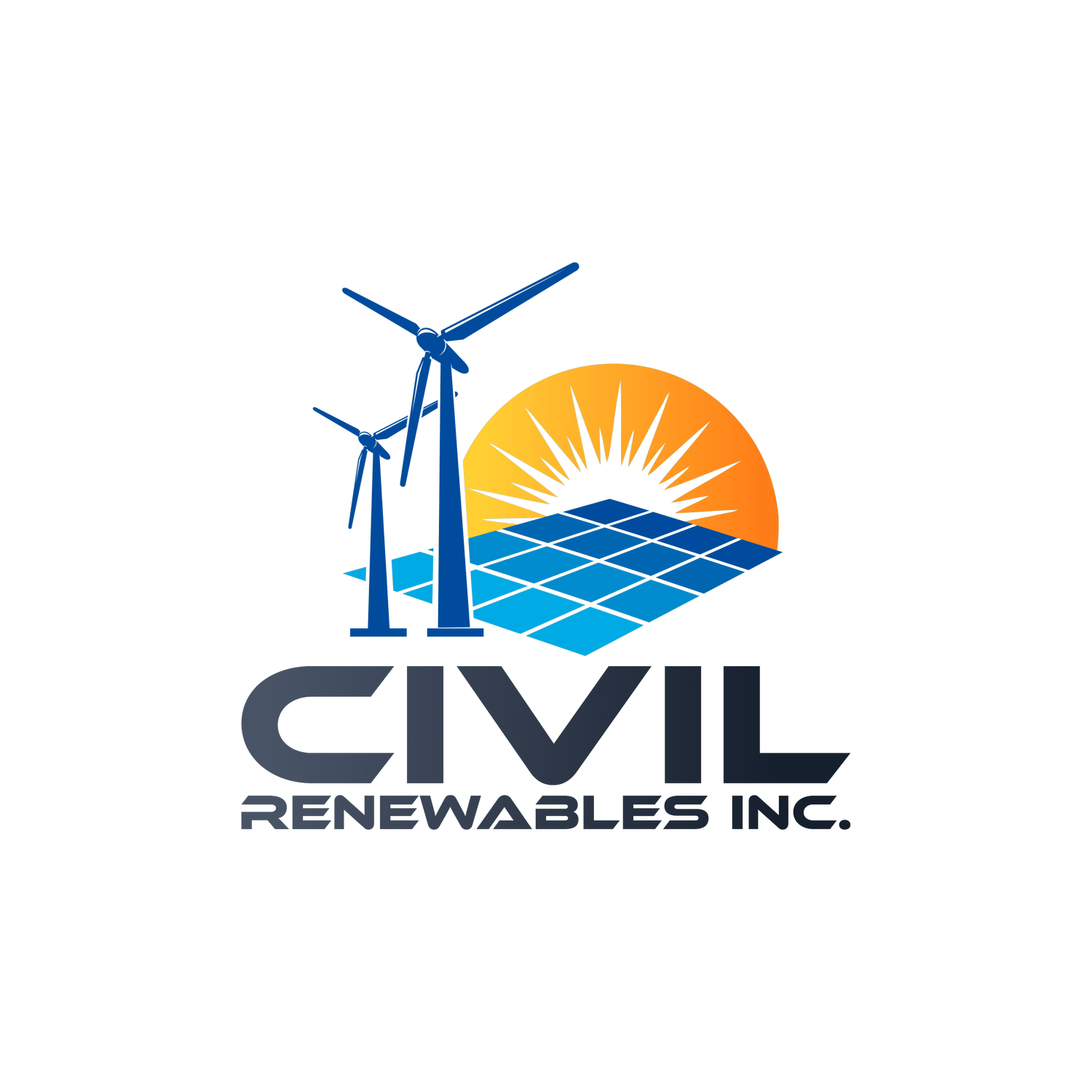Publications
In this blog entry, we intend to maintain a list of publications of relevance to Civil Renewables, Inc., and, by extension, to our clients and our colleagues within the industry. Namely, you will find here codes, standards, certification agency rules and reference texts of interest when engineering renewable energy structures and foundations. The focus is on United States and North American standards, but we also list the key, indispensable international standards. Please be mindful that the editions listed here may not be the same as those required by the Authority Having Jurisdiction (AHJ) for your specific project. Also, be mindful that AHJs may request that different sets of codes and standards be adopted for projects within their jurisdiction.
We welcome addition proposals in the comments section.
Codes, Standards, Technical Reports & Certification Agency Rules
ACI (2016). Report on Design of Concrete Wind Towers (ACI ITG-9R). American Concrete Institute, Farmington Hills, Michigan.
ACI (2019). Building Code Requirements for Structural Concrete (ACI 318-19), Second Printing 2020. American Concrete Institute, Farmington Hills, Michigan.
ACP (2023). Wind Energy Generation Systems - Part 6: Tower and Foundation Design Requirements - Modified Adoption of IEC61400-6. American Clean Power Association.
ASCE (2017a). ASCE/SE 7-16: Minimum Design Loads and Associated Criteria for Buildings and Other Structures - Provisions. American Society of Civil Engineers, Reston, Virginia.
ASCE (2017b). ASCE/SE 7-16: Minimum Design Loads and Associated Criteria for Buildings and Other Structures - Commentary. American Society of Civil Engineers, Reston, Virginia.
ASCE/AWEA (2011). Recommended Practice for Compliance of Large Land-Based Wind Turbine Support Structures (ASCE/AWEA RP2011). American Society of Civil Engineer and American and Energy Association, 2011.
CGS (2023). Canadian Foundation Engineering Manual (CFEM), 5th Edition. Canadian Geotechnical Society.
CEB-FIP (2013). fib Model Model Code for Concrete Structures 2010.
DNVGL (2016a). Loads and Site Conditions for Wind Turbines (Standard DNVGL-ST-0437 Edition November 2016). DNV GL AS November 2016.
DNVGL (2016b). Support Structures for Wind Turbines (Standard DNVGL-ST-0126 Edition April 2016). DNV GL AS April 2016.
DNV/Riso (2002). Guidelines for Design of Wind Turbines, Second Edition. Det Norske Veritas.
DNV/Riso (2004). Design of Offshore Wind Turbine Structures (Offshore Standard DNV-OS-J101 June 2004). Det Norske Veritas.
ICC (2020). 2021 International Building Code. International Code Council, Inc.
IEC (2015). IEC 62740: Root Cause Analysis (RCA). International Electrotechnical Commission, Edition 1.0 2015-2.
IEC (2020). Wind Energy Generation Systems - Part 6: Tower and Foundation Design Requirements (IEC 61400-6). Edition 1. International Electrotechnical Commission.
IEC (2021). Wind Energy Generation Systems - Part 28: Through Life Management and Life Extension of Wind Power Assets (IEC 61400-28). Committee Draft. International Electrotechnical Commission.
PTI (2008). Design of Post-Tensioned Slabs-on-Grade, 3rd Edition with 2008 Supplement. Post-Tensioning Institute, Phoenix, Arizona.
PTI (2016). Recommendations for Prestressed Rock and Soil Anchors. Post-Tensioning Institute Document No. PTI DC35.1-14, 5th edition, 2nd printing.
PTI (2019). Post-Tensioning Manual. Post-Tensioning Institute Document No. PTI TAB.1-06, 6th edition, 2nd printing.
Our Own
Ben-Hassine, J. (2024). Repowering Wind Projects - Technical Aspects. Presentation delivered at POWERGEN 2024, New Orleans, Louisiana.
Ben-Hassine, J. (2018). Direct Reliability Based Design (d-RBD) of Shallow Wind Turbine Foundations. PhD Dissertation. Colorado School of Mines, Golden, Colorado, December 2018.
Ben-Hassine, J. and Griffiths, D.V. (2013). Geotechnical Exploration for Wind Energy Projects. Proc. 18th ICSMGE, Paris, France, pp. 2319-2322.
Ben-Hassine, J. and Griffiths, D.V. (2012). Reliability Based Design of Shallow Foundations Subjected to Combined Loading with Application to Wind Turbine Foundations. Proceedings of the 11th International Congress on Numerical Methods in Engineering and Scientific Applications, CIMENICS’12.
Ben-Hassine, J., Nofal, M. (2009). "Implications of Consistent LSD/LRFD Implementation in the Design of Wind Turbine Foundations." Presentation delivered at ASCE Structures Congress 2009, Austin, TX.
Branca, W., Ben-Hassine, J. (2009). "Dynamic Analysis of a Turbine and its Foundation to Assess Liquefaction Potential of Bearing Soils" Proc., ASCE Structures Congress, Austin, TX.
Ben-Hassine, J., Booth, P.E., and Riggs, D. (1995). "Static and Seismic Stability of Residual Soils over a Bedrock Cavity." 5th Multidisciplinary Conf. on the Engineering and Environmental Impact of Karst, Gatlinburg, Tennessee, April 1995.
Fishman, K., Drumm, E.C., Ben-Hassine, J. and Ahmad, S. (1994). Influence of Interface/Joint Behavior in the Response of Structural Systems. Proc., 8th International Conference of the International Association for Computer Methods and Advances in Geomechanics, Morgantown, West Virginia, May 22-28, 1994.
Ben-Hassine, J. (1991). "Finite Element Analysis of Subsidence-induced Structural Damage," The Tunisian Scientific Magazine, 4(2), 58-61.
Drumm, E.C. and Ben-Hassine, J. (1990). "Computer Modeling for Damage Assessment of Surface Structures," Workshop on Mine Subsidence and Structures, 1990 Naonal Symposium on Mining, May 1990, pp. 23-53.
Drumm, E.C., Kane, W.F., Ketelle, R.H., Ben-Hassine, J. and Scarborough, J.A. (1990). Subsidence of Residual Soils in a Karst Terrain, Report# ORNL/TM11525, Oak Ridge National Laboratory and Martin Marietta Energy Systems, Inc.
Scarborough, J.A., Ben-Hassine, J., Kane, W.F., Drumm, E.C., and Ketelle, R.H. (1989). "Surface Deformation of Residual Soil over Cavitose Bedrock, " Proc., 3rd Multi-disciplinary Conf. on Sinkholes, St. Petersburg Beach, FL, 24 Oct. 1989, pp. 143-9.
Ben-Hassine, J. (1987). Finite Element Applications in the Analysis of Nonlinear Problems in Geomechanics, Master of Engineering Thesis, The University of Tennessee, Knoxville, TN.
Ketelle, R.H., Drumm, E.C., Ben-Hassine, J., and Manrod, W.E. (1987). "Soil Mechanics Analysis of Plastic Soil Deformation over a Bedrock Cavity," Proc., 2nd Multi-Disciplinary Conf. on Sinkholes and the Environmental Impacts of Karst.
Drumm, E.C., Ketelle, R.H., Manrod, W.E., and Ben-Hassine, J. (1987). "Analysis of Plastic Soil in Contact with Cavitose Bedrock," Proc., ASCE Specialty Conf. on Geotechnical Practice for Waste Disposal, Ann Arbor, MI, June 1987, pp. 418-431.
Industry Reports
GWEC (2023). GWEC Global Wind Report 2023. Global Wind Energy Council.
US DOE (2023). Land-Based Wind Market Report - 2023 Edition. US Department of Energy.

